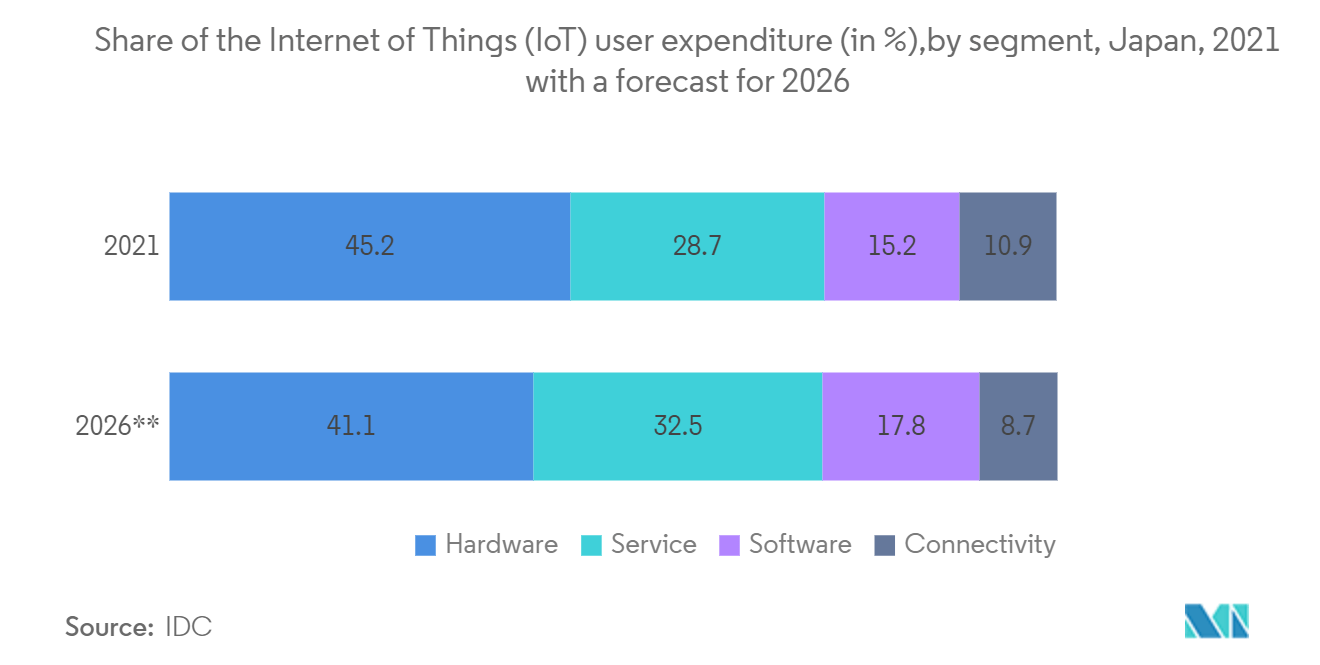Market Trends of Japan Semiconductor Device Industry For Industrial Applications
Automotive Industry Expected to Have Significant Growth
- Electric cars are becoming common on the road nowadays, with prices decreasing and ranges increasing. In addition, electric vehicles are becoming common on the road nowadays, with prices decreasing and ranges increasing. According to AIRIA Japan, as of March 31, 2022, the number of battery-electric passenger cars reached approximately 138.33 thousand, increasing from around 125.86 thousand in the previous year in Japan.
- In the past few years, many OEMs have announced billions of dollars worth of investment in EVs, which is also strong due to the restrictions on CO2 emissions. Key steps will be taken in the coming years, and a higher percentage of EVs on the road will be seen. Semiconductors play a key role in both electric vehicles and those with internal combustion engines.
- For instance, Toyota announced its Battery EV Strategy in December 2021, aiming to release 30 battery EV models by 2030 and sell 3.5 million units globally annually. Expectations for Japan's largest automaker and its impact on promoting EV use in Japan are high.
- The number of electric vehicles out on the streets is expected to keep multiplying as governments continue incentivizing clean energy and manufacturers find ways to make their cars more accessible. A big part of making that possible is the ongoing innovation in battery technology, driven by the demand for smaller, lighter, and safer batteries that charge faster and last longer. For instance, Tesla, which uses a rapid charging solution, is already using SiC within its vehicle architectures today.
- SiC semiconductors are ideal for onboard chargers and inverters used within plug-in hybrid (PHEV) and fully electric vehicles (EVs). This is because their energy efficiency is significantly higher compared to traditional silicon. For instance, Japan aims to achieve net-zero emissions by 2050 and cut emissions by 46% by 2030. The government applications and the transition to EV recognition assist the country's decarbonization efforts. First, it intends to prohibit the sale of gasoline-powered automobiles by the mid-2030s. It also intends to make electric vehicles more affordable to consumers. Meanwhile, subsidies are now limited to JPY 800,000.
- To ensure that EVs can operate over long distances and charge within a reasonable timeframe, the vehicle's power electronics must be capable of handling high temperatures. SiC semiconductors benefit from more than 95% energy efficiency, i.e., only 5% of the energy is lost as heat during power conversion instances, such as recharging the vehicle at a high-power rapid-charger.
- STMicroelectronics announced new automotive microcontrollers (MCUs) optimized for electric vehicles in February 2022. New STMicroelectronics automotive microcontrollers (MCUs) are designed for electric vehicles and centralized (zonal and domain) electronic architectures. The new Stellar E MCUs from STMicroelectronics are designed for next-generation software-defined EVs and feature on-chip high-speed control-loop processing. This platform enables a new value chain for EVs with the new Stellar E devices.

Smart Infrastructure to drive the growth
Smart infrastructure includes using sensors and smart grid technologies to facilitate smart water and energy networks, streets, buildings, and so forth. The smart grid, as compared to the conventional grid, is automated, highly integrated, technology-driven, and modernized. The smart grid will transform electrical networks, their topology, and power system operation in the coming years.
Further, power electronic systems, which convert and process electric energy from one form to another, are critical for smart grid implementation. As the cornerstone technology in any power electronics system, power semiconductor devices enable power electronics systems to reach ultrahigh efficiency and high-power capacity needed for various smart grid and renewable energy system applications.
Further, using efficient power semiconductors and advanced sensor and security solutions allows for designing effective, reliable, and multi-dimensional robots.
The increasing demand for data centers also boosts the demand for semiconductors like memory components. The presence of significant cloud technology enablers, such as SAS, and the growing geographic footprint of cloud service providers, like Amazon Web Services (AWS), Microsoft Azure, and Google Cloud, focused on building data centers in Japan, contributing to the growth of the Japan data center market.
For instance, in October 2022, Google planned to establish its first data center in Japan by 2023. The data center will be located in Inzai City, Chiba, and will be part of the company's USD 730 million infrastructure fund, which will continue through 2024.



